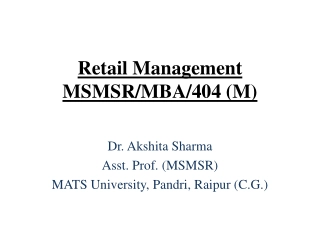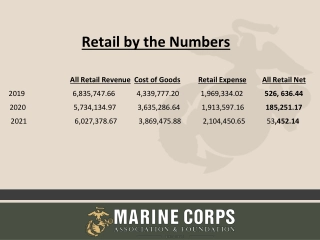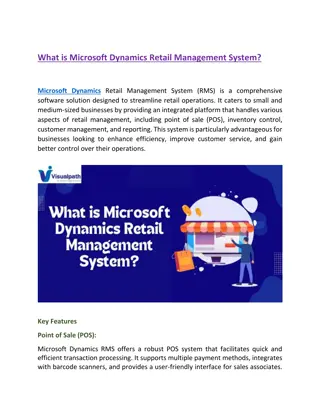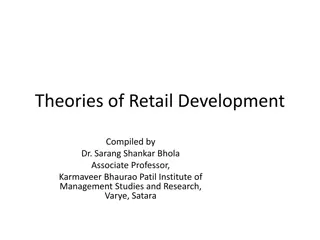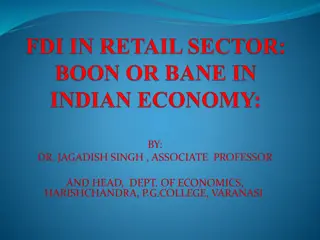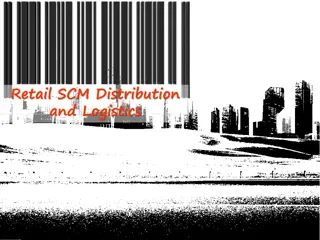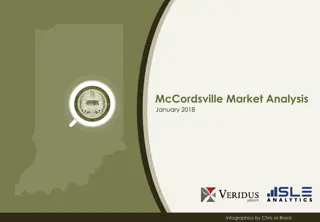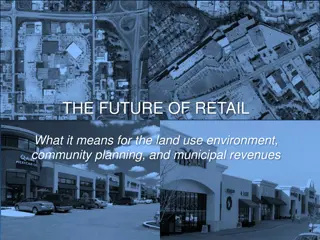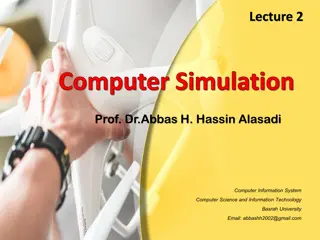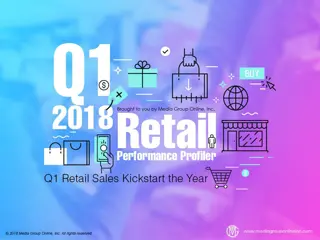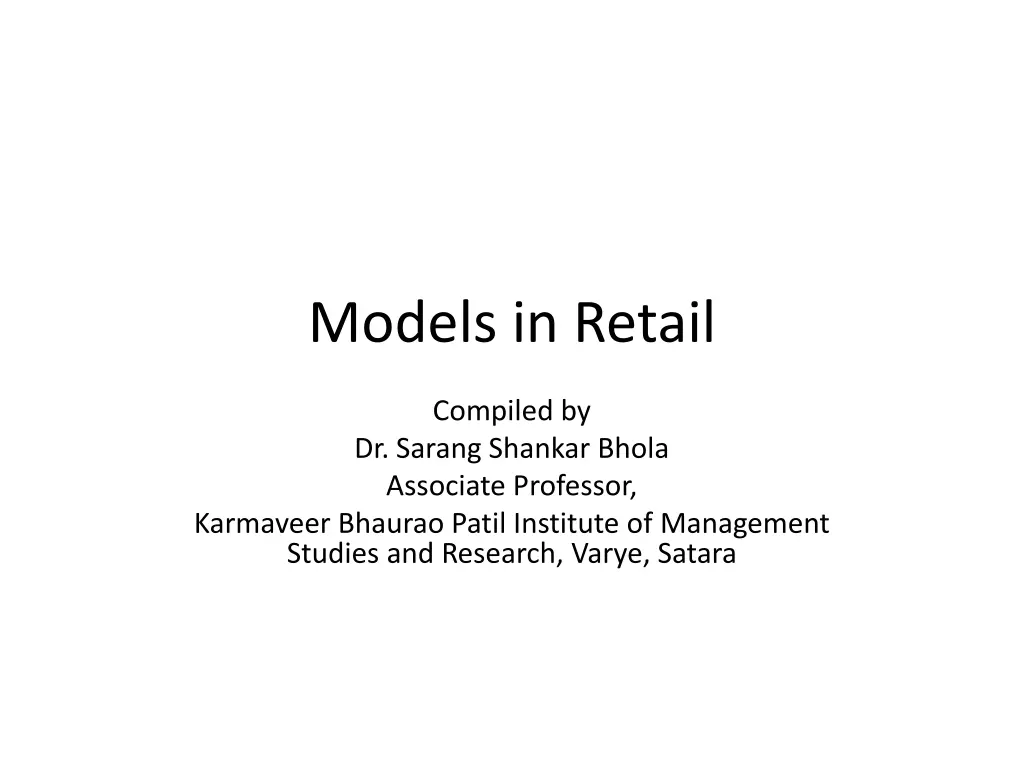
Retail Models and Scenario in India
Explore the various models of retailers in the evolving retail sector of India, from convenience stores to hypermarkets and shopping malls. Learn about the different types of retailers and their characteristics, such as departmental stores, specialty stores, supermarkets, and more. Witness how leading corporations like Piramals, Tatas, and Rahejas are reshaping the retail landscape, with a focus on customer accessibility and merchandise offerings. Dive into the vibrant world of retail in India with insights compiled by Dr. Sarang Shankar Bhola, Associate Professor at Karmaveer Bhaurao Patil Institute of Management Studies and Research.
Download Presentation

Please find below an Image/Link to download the presentation.
The content on the website is provided AS IS for your information and personal use only. It may not be sold, licensed, or shared on other websites without obtaining consent from the author. If you encounter any issues during the download, it is possible that the publisher has removed the file from their server.
You are allowed to download the files provided on this website for personal or commercial use, subject to the condition that they are used lawfully. All files are the property of their respective owners.
The content on the website is provided AS IS for your information and personal use only. It may not be sold, licensed, or shared on other websites without obtaining consent from the author.
E N D
Presentation Transcript
Models in Retail Compiled by Dr. Sarang Shankar Bhola Associate Professor, Karmaveer Bhaurao Patil Institute of Management Studies and Research, Varye, Satara
Retail Scenario in India As the corporate the Piramals, the Tatas, the Rahejas, ITC, S.Kumar s, RPG Enterprises, and mega retailers- Crosswords, Pantaloons race to revolutionize the retailing sector, retail as an industry in India is coming alive. Shopper s Stop, and
Types of Retailers: (Suja Nair, Himalaya, 3rdedn 2008, 7) Sr Type Description Ideally located close to residential areas to enable target customers have easy accessibility and select convenient merchandise such as beverages, ready to eat snacks, grocery etc. eg. Neighborhood grocery stores. Convenience store 1 A single retailer establishes a chain of stores with its exclusive store design, synergistic merchandising plan, and promotion and service strategy and so on. Eg. Raymond, Khazana Jewellery etc. Chain of stores 2 Retail stores owned and operated by individuals on behalf of and licensed by a big supporting organization eg. Pizza Hut, Baskin Robbins, Aptech, NIIT, Nirulas, McDonalds etc. 3 Franchise
Retail shops displaying merchandise which have narrow product lines, specializing in a merchandise and offering specialized services to customers et. Carbon from Peakok Jewellery, Park Avenue from Raymond s is a men s speciality store. A store having several departments such as clothing, personal care and cosmetics, books and stationeries, house ware goods, electronics etc. all under a single roof, although individually functioning as a strategic business unit. These stores are large in size more often owned by large or national chains eg. Life Style, Shoppers Stop, Pantaloon etc. A store which is departmentalized, with self service offering groceries, limited non food items such as health and beauty related items and general merchandise et. Foodworld outlets, Niligiris. Large, low cost, low margin, high volume, self service store designed to meet total needs for food and household products. (Kotler , Keller, Koshy, Jha, 13thedn., 433 ). particular type of Speciality Stores 4 Departmental Store 5 6 Supermarket
Hyper markets are very large in size, carry grocery, hardware, appliance and other general merchandise, with self service facilities, usually located in warehouse type structures with large parking facilities et. Star India bazaar, big bazaar, Trent s (a Tata Enterprise). A shopping mall is an arrangement of retail stores and providing the right mix of shopping, food courts and entertainment and parking facilities. The retail space is shared by anchor stores and other retailers (tenants), who will pay the developers of the mall rent or lease payment for putting up the shop within the mall premises eg. The Forum in Bangalore, Central, Sigma mall etc. The shopping plaza will be a configuration of many tenants using space of 1000 sq.ft. or so for putting up stores within a single building eg. Fountain Plaza Chennail, Modi Arcade Plaza Bangalore. Hyper Market 7 Shopping mall 8 Shopping Plaza 9
Discount stores retail a broad variety of merchandise, offer limited services and at low prices eg. Subiksha, margin free super market. Standard or speciality merchandise, low price, low margin, high colume stores. Wal-Mart. (Kotler , Keller, Koshy, Jha, 13thedn., 433 ) The factory stores are owned and operated by the manufacturers who sell discounted merchandise or factory seconds or cancelled orders to consumers at low prices eg. Bata factory outlet, Indigo national/ Peter England factory outlet Kiosk as a store often is a concession format store placed within a mall/shopping centre, a bus station, airport etc. it is a free sanding pavilion open on one or more sides eg. A bookstore kiosk, customers are provided with online catalogue service to help them to identify titles and read reviews before making a purchase decision. Discount Stores 10 Factory / second outlet 11 12 Kiosk
Emergence of new formats of retailing in India Hypermarts Large supermarkets, typically (3,500 - 5,000 sq. ft) Mini supermarkets, typically (1,000 - 2,000 sq. ft) Convenience store, typically (7,50 - 1,000 sq. ft) Discount/shopping list grocer Traditional retailers introducing self-service formats as well as value- added services such as credit, free home delivery etc. trying to reinvent by
The Indian retail sector can be broadly classified into Food Retailers Health and Beauty Products Clothing and Footwear Home Furniture and Household Goods Durable Goods Leisure and Personal Goods
a) Food Retailers: There are large number and variety of retailers in the food-retailing sector. Traditional types of retailers, who operate small single-outlet businesses mainly using family labour, dominate this sector . In comparison, super markets account for a small proportion of food sales in India. However the growth rate of super market sales has being significant in recent years because greater numbers of higher income Indians prefer to shop at super markets due to higher standards of hygiene and attractive ambience.
b) Health and Beauty Products With growth in income levels, Indians have started spending more on health and beauty products . Here also small, single-outlet retailers dominate the market However in recent years, a few retail chains specializing in these products have come into the market. Although these retail chains account for only a small share of the total market , their business is expected to grow significantly in the future due to the growing quality consciousness of buyers for these products .
c) Clothing and Footwear Numerous clothing and footwear shops in shopping centers and markets operate all over India. Traditional outlets stock a limited range of cheap and popular items; in contrast, modern clothing and footwear stores have modern products and attractive displays to lure customers. However, with rapid urbanization, and changing patterns of consumer tastes and preferences, it is unlikely that the traditional outlets will survive the test of time.
d) Home Furniture and Household Goods Small retailers again dominate this sector. Despite the large size of this market, very few large and modern retailers have established specialized stores for these products. However there is considerable potential for the entry or expansion of specialized retail chains in the country.
e) Durable Goods The Indian durable goods sector has seen the entry of a large number of foreign companies during the post liberalization period. A greater variety of consumer electronic items and household appliances became available to the Indian customer. Intense competition among companies to sell their brands provided a strong impetus to the growth for retailers doing business in this sector.
f) Leisure and Personal Goods Increasing household incomes due to better economic opportunities have encouraged consumer expenditure on leisure and personal goods in the country. There are specialized retailers for each category of products (books, music products, etc.) in this sector. Another prominent feature of this sector is popularity of franchising agreements manufacturers and retailers. between established
Challenges of Retailing in India Retailing as an industry in India has still a long way to go. To become a truly flourishing industry, retailing needs to cross the following hurdles: Automatic approval is not allowed for foreign investment in retail. Regulations restricting real estate purchases, and cumbersome local laws. Taxation, which favours small retail businesses. Absence of developed supply chain and integrated IT management. Lack of trained work force. Low skill level for retailing management. Intrinsic complexity of retailing rapid price changes, constant threat of product obsolescence and low margins.


